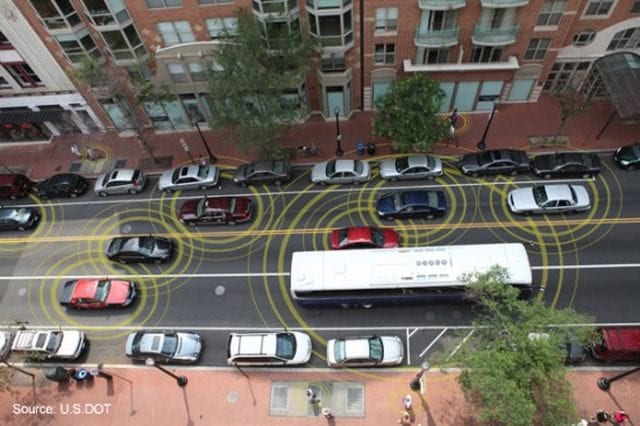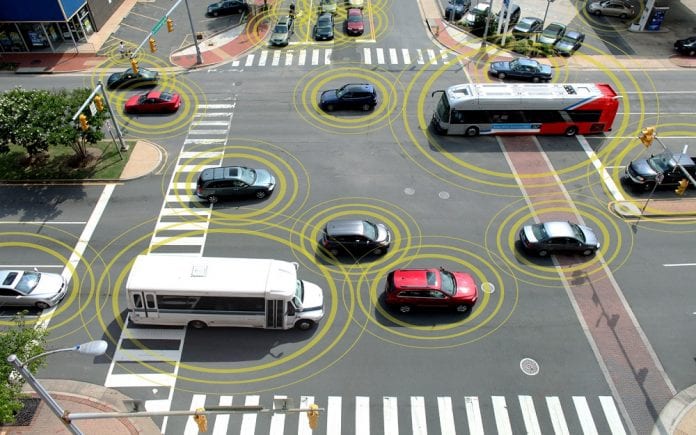Every day, the National Highway Traffic Safety Administration (NHTSA) is diligently working on improving traffic safety in the USA. They have been developing vehicle-to-vehicle (V2V) communication technology which might completely change the way people in the US travel. With this technology, vehicles could communicate important safety and mobility information among each other, which can save lives and prevent injuries.
After a long period of testing of this technology, NHTSA published the notice of proposed rulemaking (NPRM) which will become Federal Motor Vehicle Safety Standard (FMSS) 150. If this happens, all carmakers will be obliged to produce cars with dedicated short-range communication (DSRC) radios. This will most likely start in 2024 if some issues don’t pop up in the meantime.
The NHTSA spokesman, Bryan Thomas, said: “The whole process from a publication of the NPRM to final rule usually takes about one year. Two years after that the phase-in period begins with half of new vehicles in the first year being affected, 75% in the second year and 100% from the third year on.”
This DSRC technology is the variant of WiFi, and short messages are emitted from and received to DSRC radios ten times per second in a range from 1,000 to 1,500 feet. These messages that are being sent give a deeper insight into the position, speed, heading and braking status of a vehicle.

The kind of messages that the drivers will receive are that someone activated ABS because of the slippery road, or that some vehicle which is approaching is not visible. Sensors and cameras have the ability to see through other cars or around the corner.
The result of all of this could be significantly safer roads with a lower number of accidents. Furthermore, it is possible that this type of technology could be crucial for autonomous driving as it would allow vehicles to communicate reducing the possibility of mistakes.









